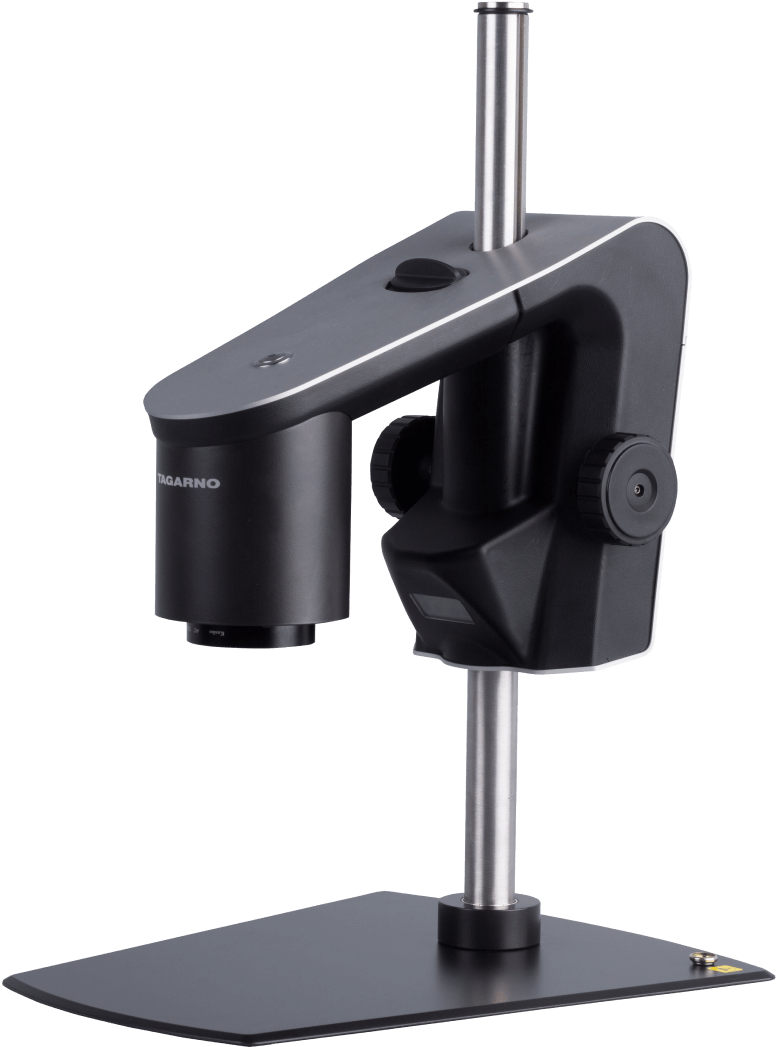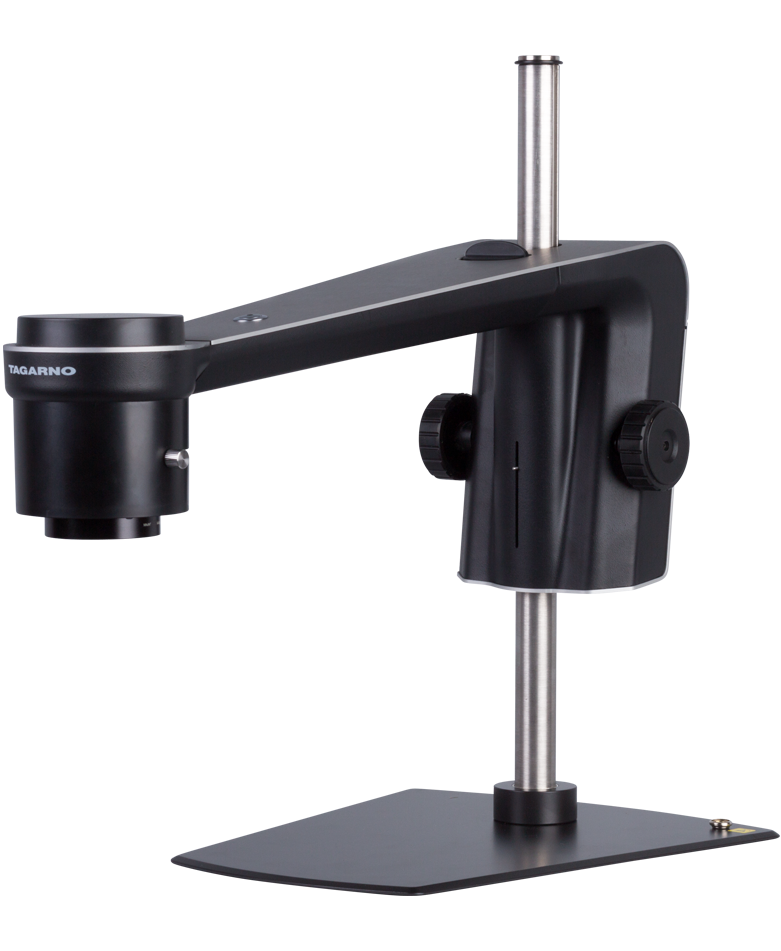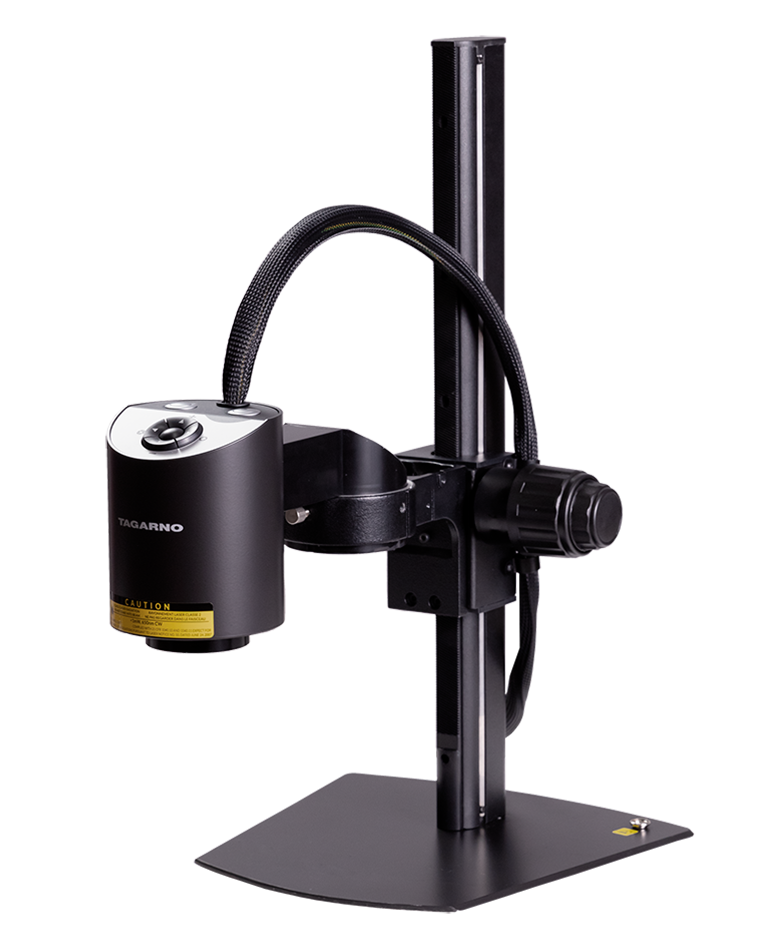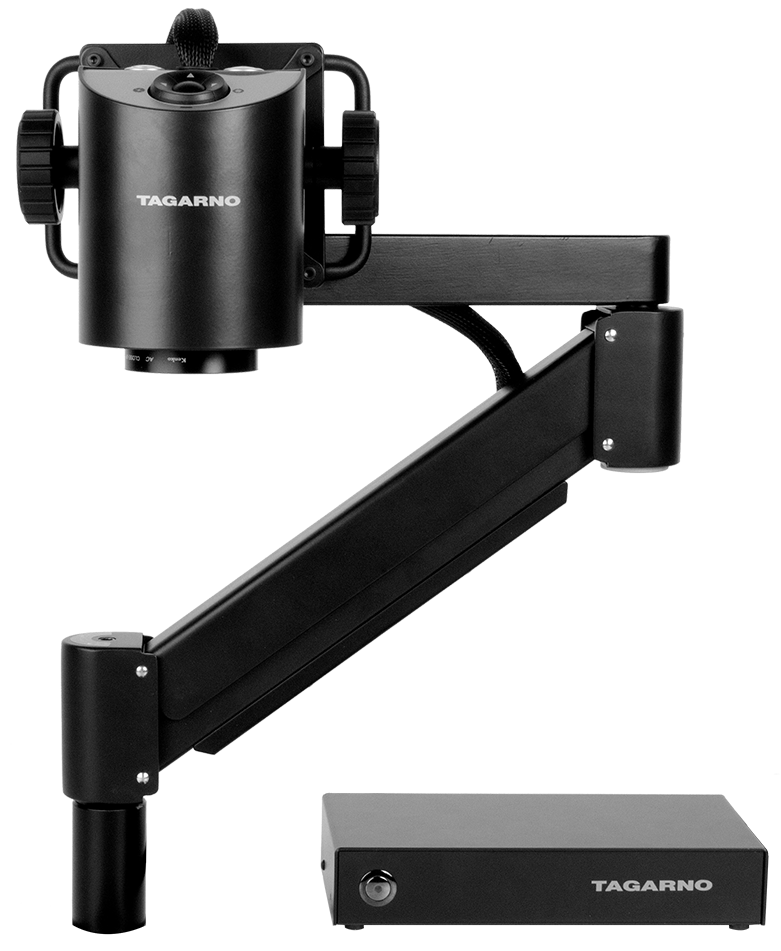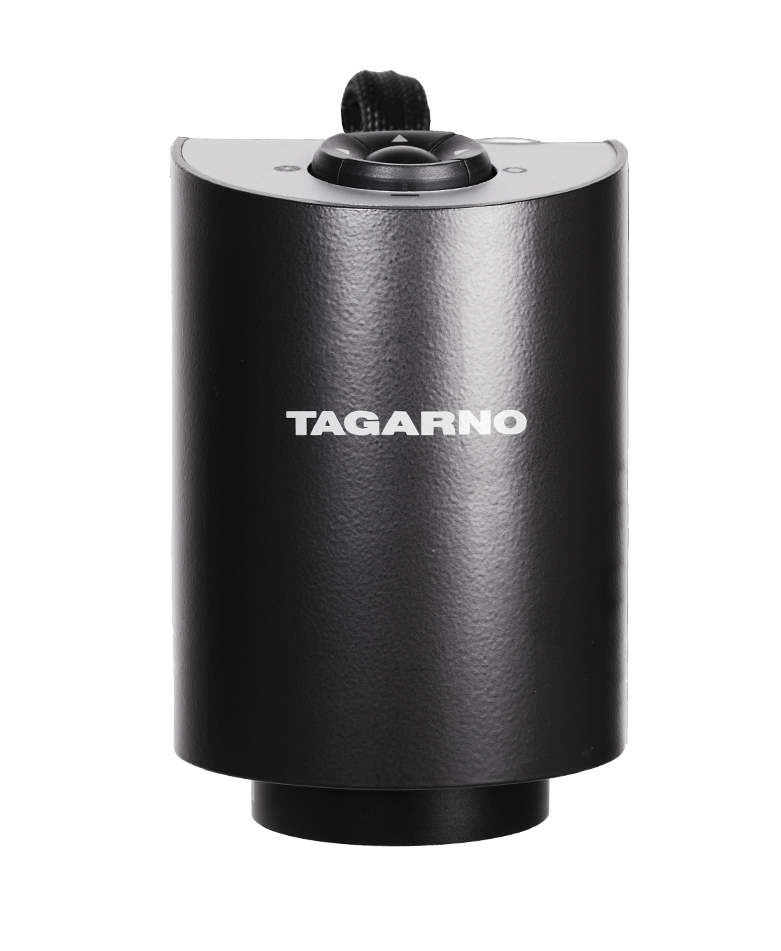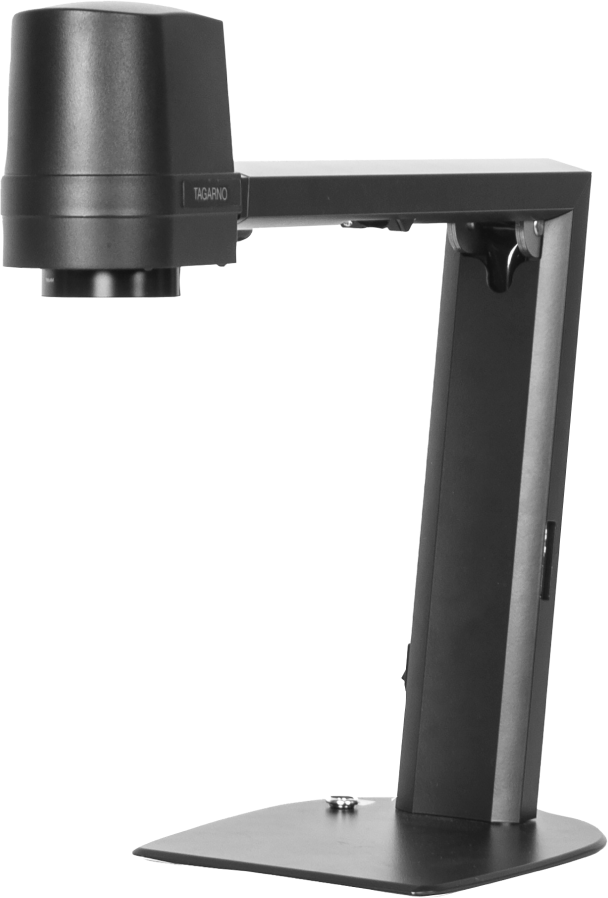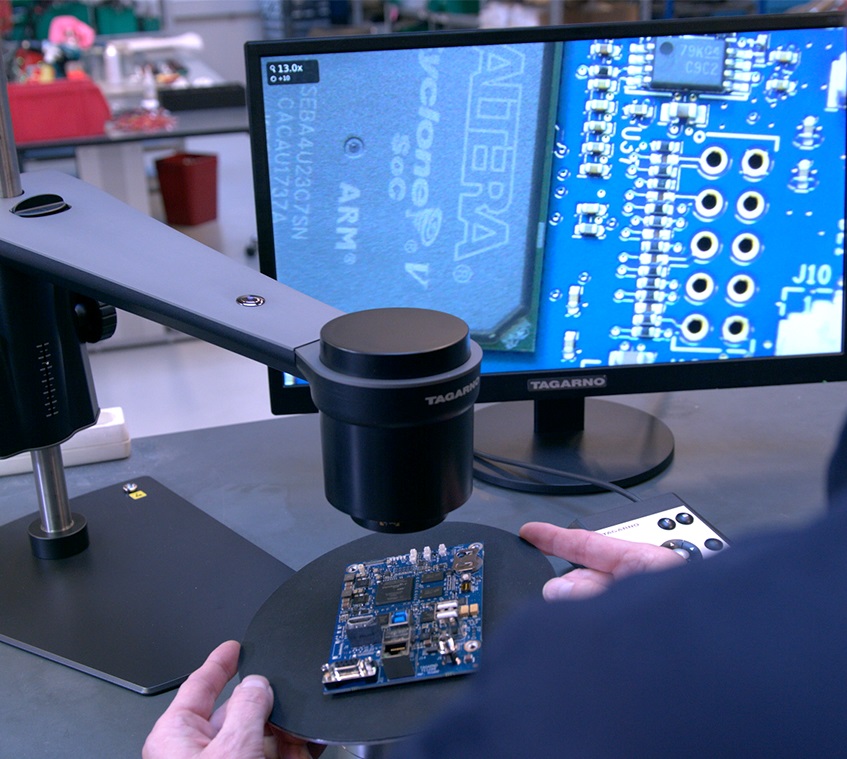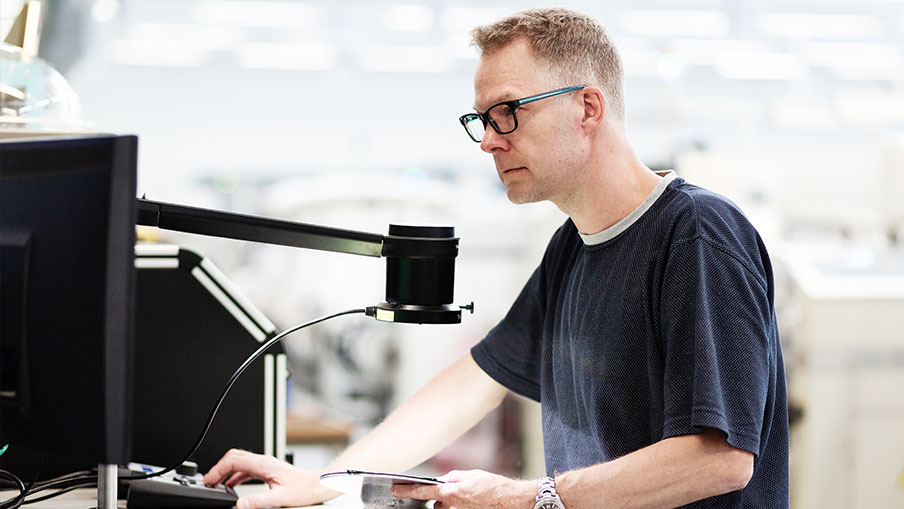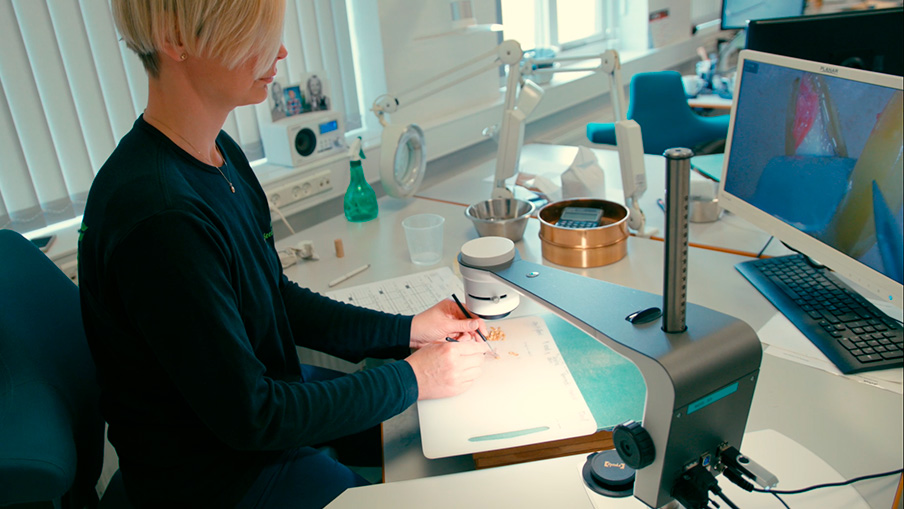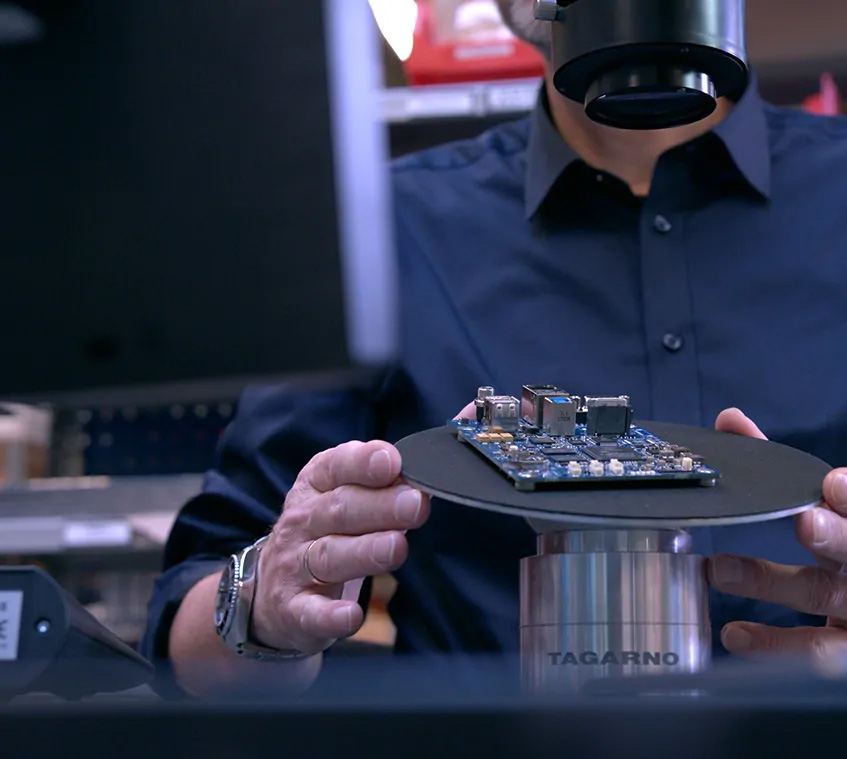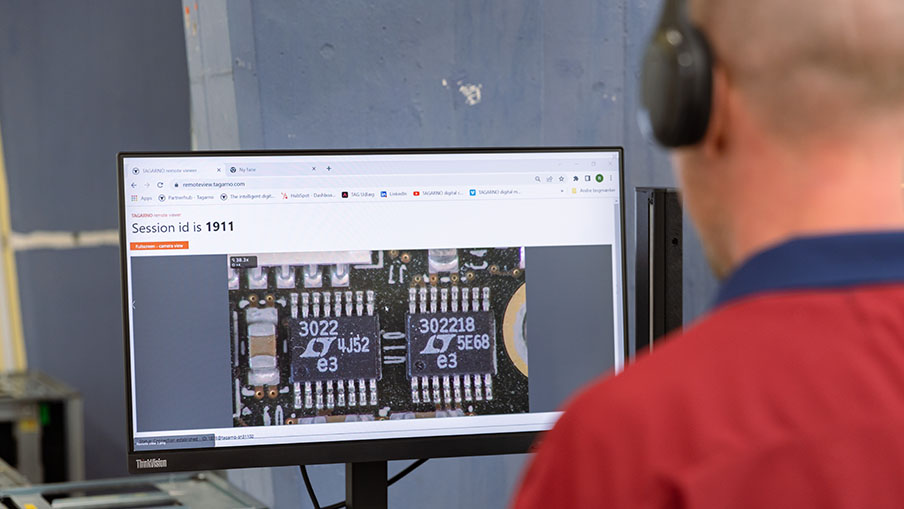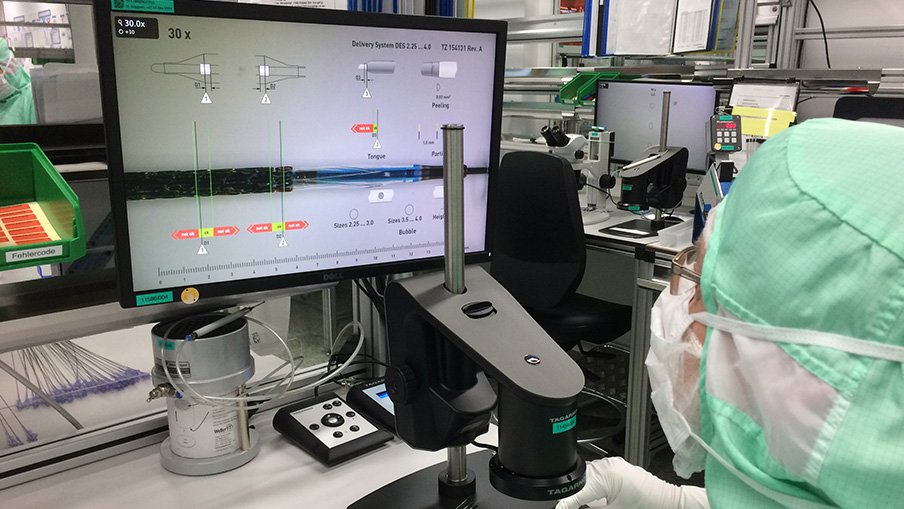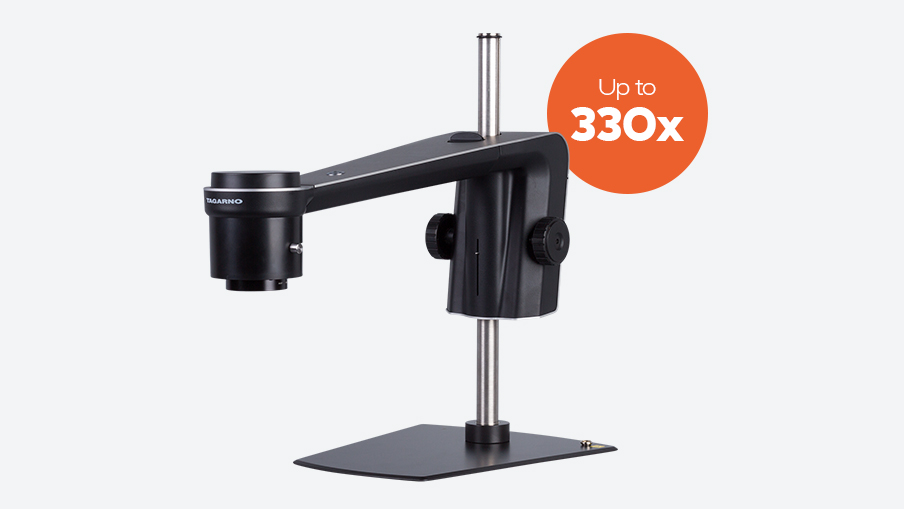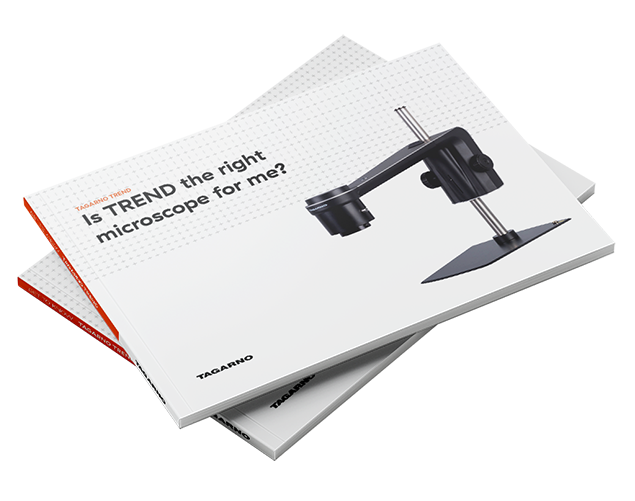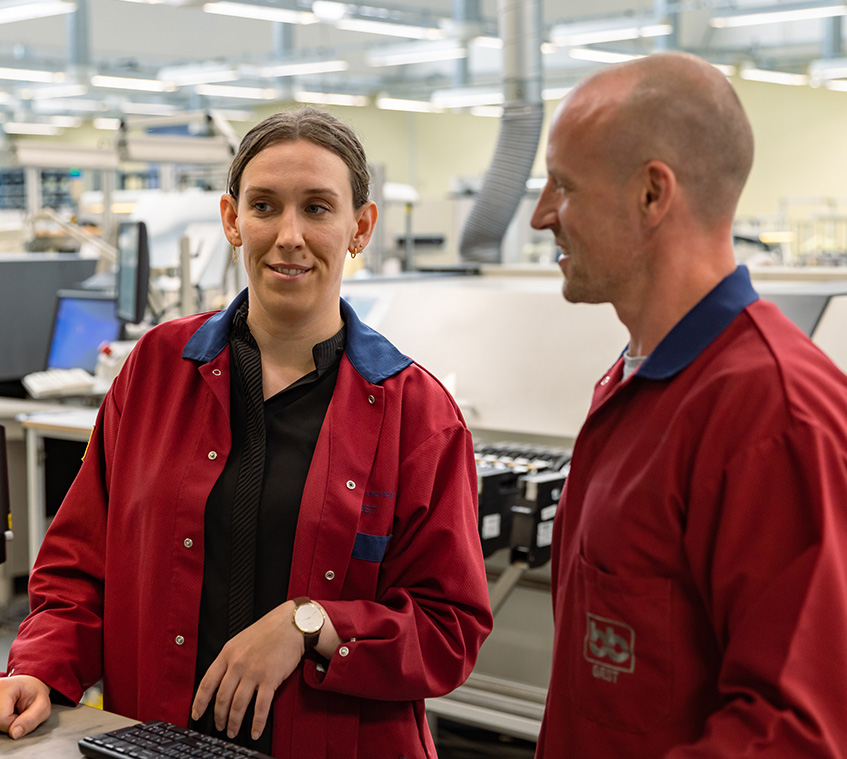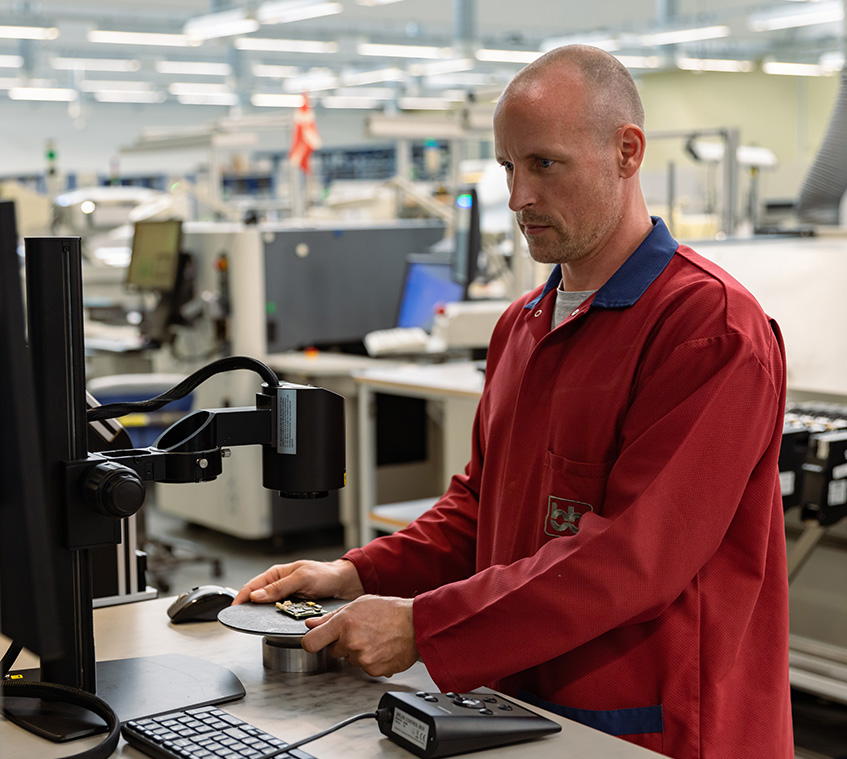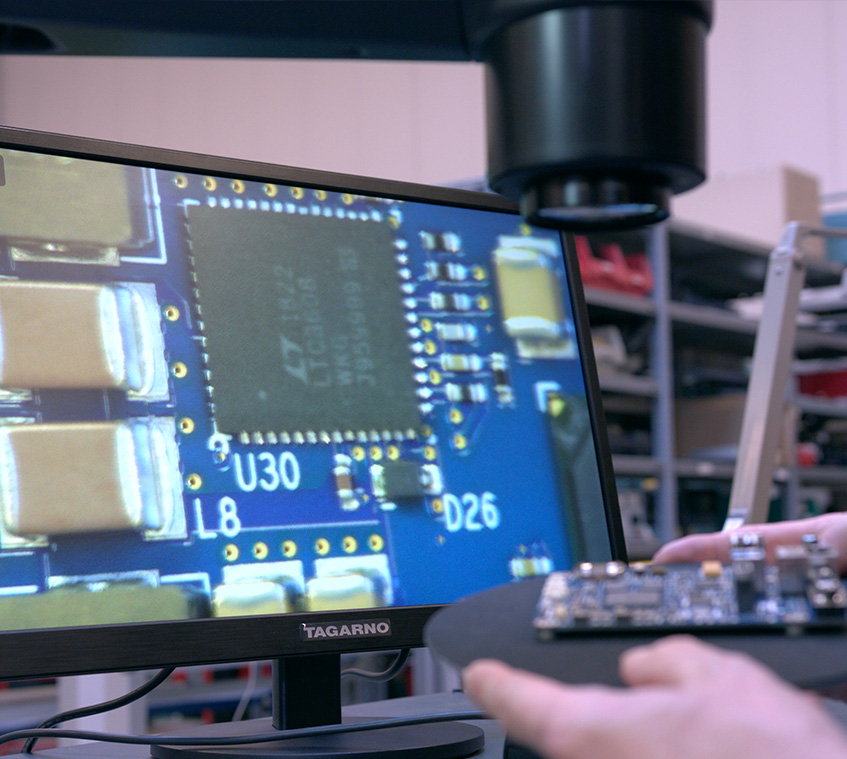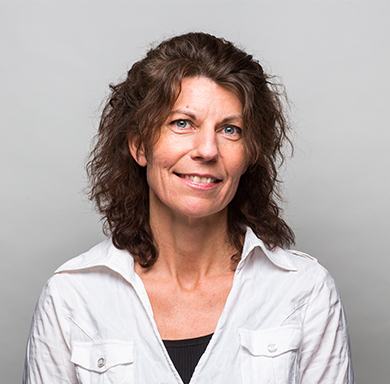TAGARNO TREND
Not only is TAGARNO a trusted brand and supplier of digital microscope cameras by companies worldwide.
TAGARNO is also the manufacturer of the TAGARNO TREND, a microscope that provides up to 330x magnification, multiple height settings and a long camera arm that ensures enough room to fit bigger samples underneath the camera.
Just like the other digital microscope cameras from TAGARNO, the TREND consists of an integrated camera, displays 60 frames per second and offers both auto focus and manual focus:
- 60 frames per seconds ensures that there’s no lag between what’s happening underneath the microscope and on the monitor
- Auto focus ensures that your sample always stays in focus, even if you’re moving it around, while manual focus provides extra flexibility if you need to focus on a specific area of your sample
Instead, what actually makes the TREND stand out is the wide range of built-in features and add-on options: From day one, you can use advanced features like presets and the Ruler app to take your inspections to the next level.
If needed, you can also activate additional software such as the Measurement app, use the Open API and even update the microscope with new firmware. This will give you access to new features as they are released.
Lastly, taking photos of your findings is incredibly easy. All you need to do is press the camera button on the control box. No computer needed.
You can access these photos on any computer that’s connected to the same network as the microscope. Or you can transfer them from the microscope to your computer of choice using an encrypted USB stick.
